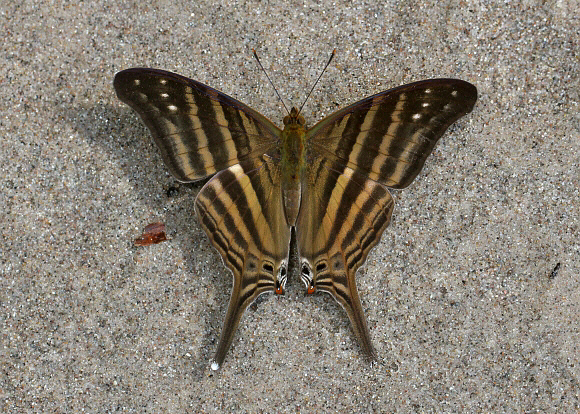 Marpesia chiron, male, Rio Pindayo, Peru – Adrian Hoskins
Marpesia chiron, male, Rio Pindayo, Peru – Adrian Hoskins
Introduction
The genus Marpesia is confined largely to the neotropical region, but is closely allied to the Mapwing and Maplet butterflies ( Cyrestis & Chersonesia ) of the Oriental region.
Daggerwings are similar in wing shape to Swordtails and Swallowtails ( Papilionidae ), but the latter have 6 legs whereas Marpesia and all other Nymphalidae genera have only 4 legs. Another feature to look for is the antennae. In all Papilionids these are recurved at the tip, but in Marpesia they are straight. In total there are 17 Marpesia species, all with the same wing shape as chiron, except for petreus which has 2 tails on each hindwing and a deeply scalloped outer margin to it’s forewing.
Marpesia chiron is a very common and widespread species occurring in the southern United States, throughout Central America and the Caribbean; and in South America from Colombia to Bolivia.
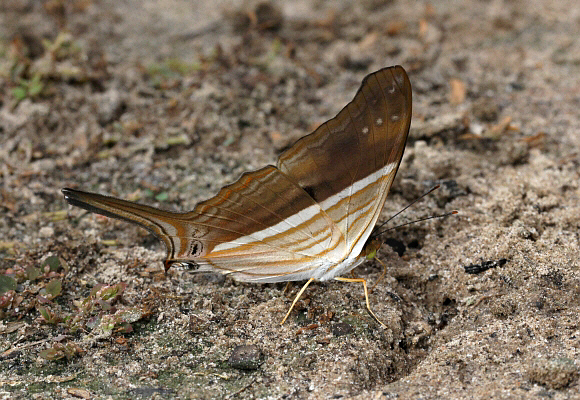 Marpesia chiron, male, Rio Pindayo, Peru – Adrian Hoskins
Marpesia chiron, male, Rio Pindayo, Peru – Adrian Hoskins
Habitats
This species is strongly migratory in behaviour and can thus turn up in many different habitats. It is usually very common in disturbed forest-edge habitats such as along tracks or river beaches within primary rainforest, cloudforest or deciduous forest. It also occurs in secondary woodland, suburban parks etc; and is commonly encountered along roadsides, hence it’s alternative vernacular name, the Road Page. It can be found at elevations between 0-2500m, but is commonest below 1000m.
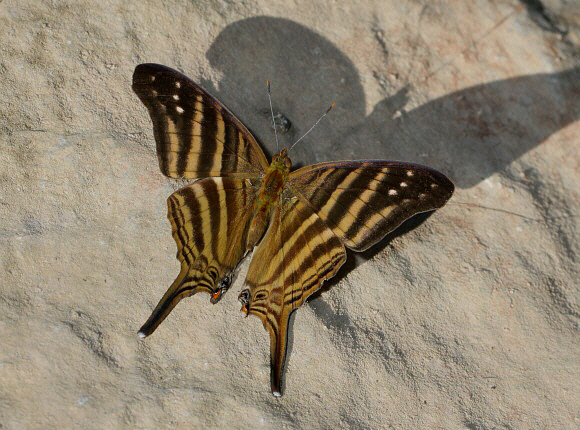 Marpesia chiron, Satipo, Peru – Adrian Hoskins
Marpesia chiron, Satipo, Peru – Adrian Hoskins
Lifecycle
The eggs are whitish, and laid singly on the foliage of trees and shrubs in the family Moraceae – including Ficus, Chlorophora, Brosimum and Artocarpus.
The fully grown larvae are very colourful, typically marked with red or yellow spots and stripes. There is a single row of unbranched, recurved spines along the back, and the head is adorned with a pair of very long wavy spines. They feed diurnally and rest on the upper surface of leaves.
The pupae are typically pale in colour, marked with blackish spots or blotches, and have wiry filaments projecting from the back of the abdomen and from the head.
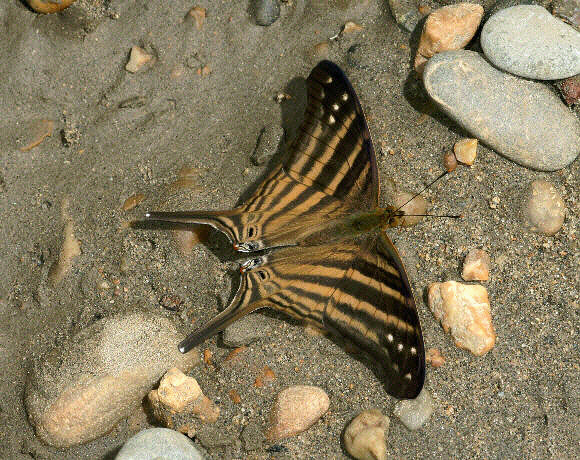 Marpesia chiron, male, Rio Madre de Dios, Peru – Adrian Hoskins
Marpesia chiron, male, Rio Madre de Dios, Peru – Adrian Hoskins
Adult behaviour
Males commonly gather to imbibe mineralised moisture at ditches, river beaches and roadsides. Aggregations of dozens or even hundreds are not uncommon. In hot weather they are extremely active, darting and skipping from place to place, and rarely settling for more than 2 or 3 seconds. The wings are usually held erect, but in cooler conditions they will bask with wings outspread.
Females are elusive, spending most of their lives in the forest canopy, and are rarely encountered.
This species forms gregarious nocturnal roosts in which up to 15 adults cluster together hanging beneath tree branches.
 Marpesia chiron, Rio Shima, Satipo, Peru – Adrian Hoskins
Marpesia chiron, Rio Shima, Satipo, Peru – Adrian Hoskins
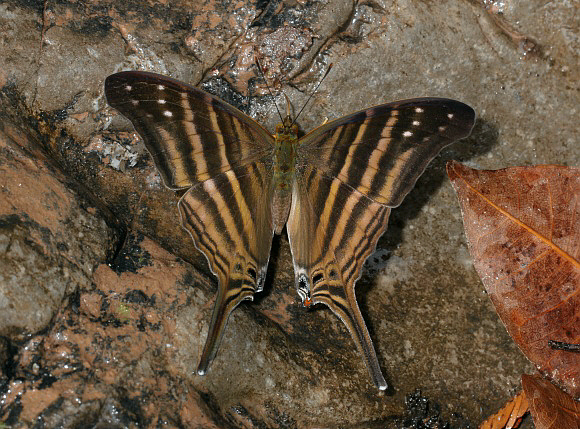
Marpesia chiron, Rio Shima, Satipo, Peru – Adrian Hoskins
